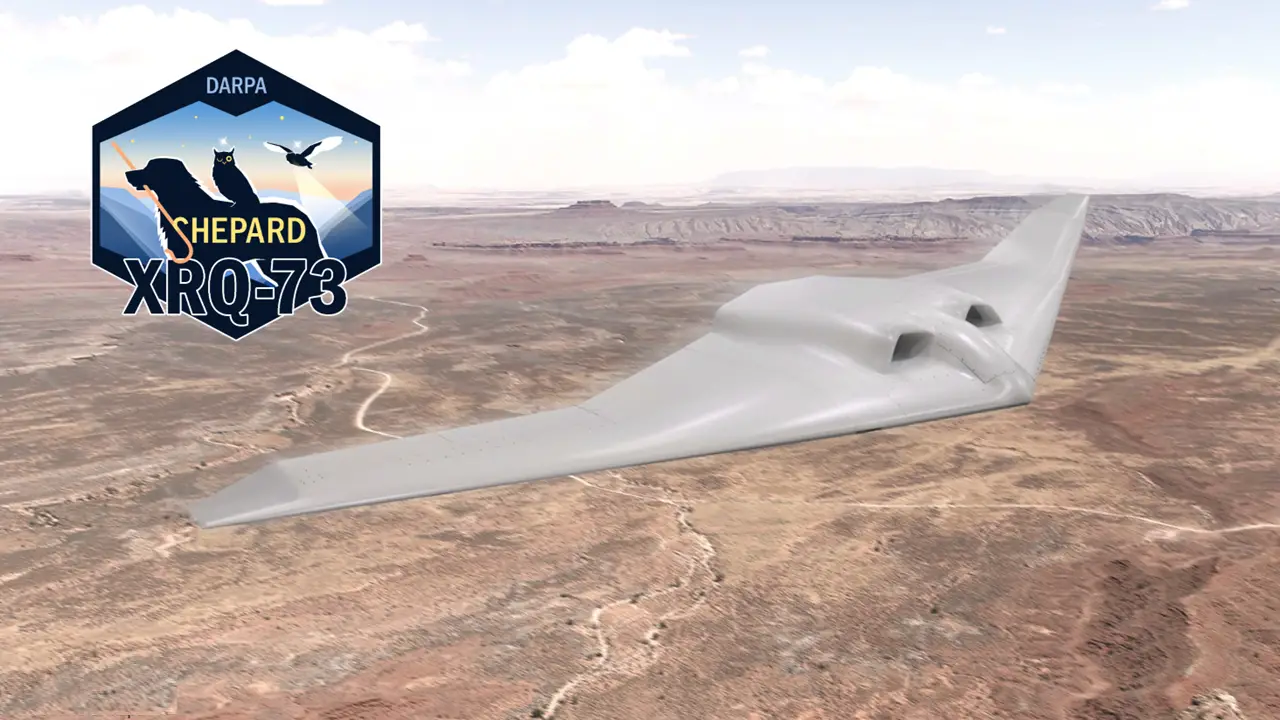The Series Hybrid Electric Propulsion AiRcraft Demonstration program, known as SHEPARD, has received its official X-plane designation: XRQ-73. SHEPARD is an “X-prime” program, leveraging the series hybrid electric architecture and some of the component technologies from the earlier AFRL/IARPA Great Horned Owl (GHO) project. The DARPA team includes members from the Air Force Research Laboratory (AFRL), the Office of Naval Research (ONR), and warfighters. The prime contractor for SHEPARD is Northrop Grumman Corporation’s Aeronautics Systems sector in Redondo Beach, CA. Scaled Composites, LLC is a major supplier, along with Cornerstone Research Group, Inc., Brayton Energy, LLC, PC Krause and Associates, and EaglePicher Technologies, LLC. The XRQ-73 aircraft will be a Group 3 UAS weighing approximately 1,250 pounds. First flight of the XRQ-73 is expected by year-end 2024.
“The idea behind a DARPA X-prime program is to take emerging technologies and burn down system-level integration risks to quickly mature a new missionized long endurance aircraft design that can be fielded quickly,” said Steve Komadina, SHEPARD program manager. “The SHEPARD program is maturing a specific propulsion architecture and power class as an exemplar of potential benefits for the Department of Defense.”

The SHEPARD drone represents a significant evolution in uncrewed aerial vehicle (UAV) technology. Drawing comparisons to well-known designs such as Lockheed Martin’s RQ-170 Sentinel, P-175 Polecat, and X-44A, as well as Scaled Composites XRQ-72A, the SHEPARD stands out with its distinctive features. Speculations about its shape hint at similarities to Northrop Grumman’s RQ-180. The XRQ-73 model introduces two air intakes flanking a central fairing, differing significantly from DARPA’s initial renderings, which depicted four separate intakes. The aircraft employs a hybrid-electric propulsion system, though specific details remain scarce. This system combines traditional fuel-powered engines with electric motors, enhancing fuel efficiency and enabling a quieter all-electric operation mode.
The preceding XRQ-72A featured dual multi-sectioned inlets at the front of its fuselage. These inlets fed air to two fuel-powered generators, which in turn provided electric power to four ducted fan propulsors mounted at the rear of the central fuselage. While performance specifics for the XRQ-73 have not been disclosed, DARPA classifies it as a Group 3 UAS, weighing around 1,250 pounds. According to U.S. military definitions, Group 3 UASs weigh between 55 and 1,320 pounds, fly at altitudes of 3,500 to 180,000 feet, and achieve speeds between 100 and 250 knots. At 1,250 pounds, the XRQ-73 is significantly larger than the XRQ-72A, which was designed to weigh between 300 and 400 pounds. The XRQ-72A boasted a 30-foot wingspan, an 11.2-foot length, and a height of four feet, including its vertical wingtip stabilizers.















